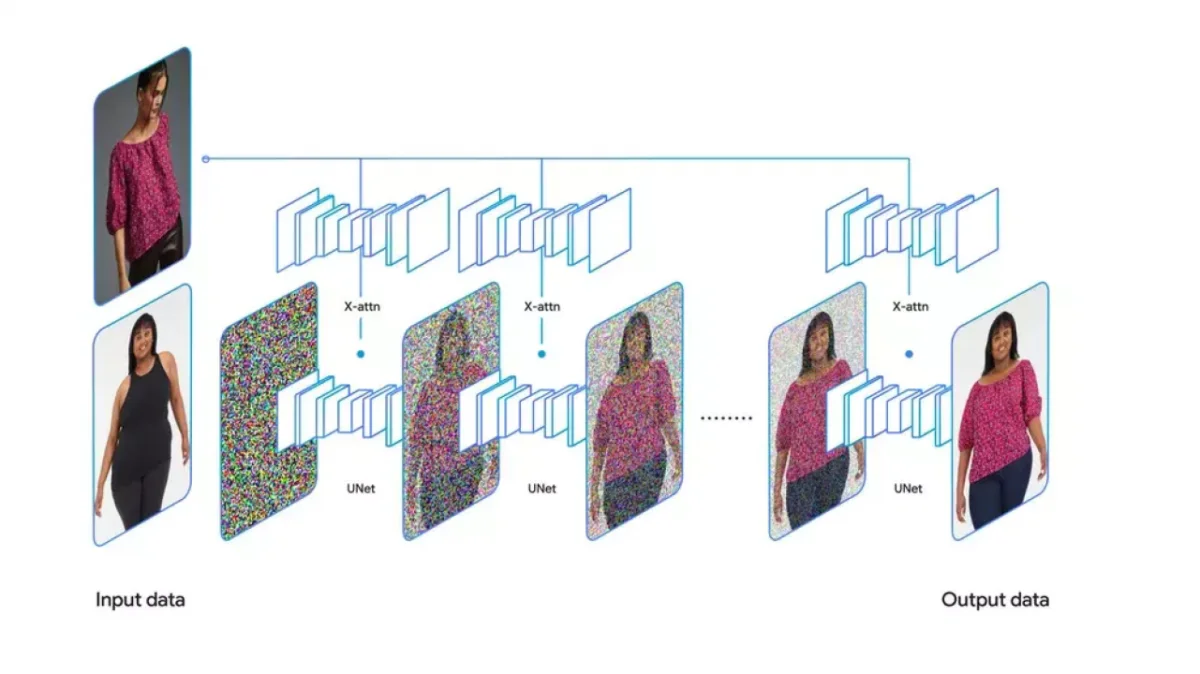Model dimensions are rather rare, resulting in potential buyers often feeling underrepresented in online catalogues. This discrepancy between how clothes look online and how they fit in reality can lead to disappointment. To address this issue, Google is introducing a feature in the USA that allows users to virtually try on clothing with select models. The feature will be integrated into Google’s Shopping results in search. The models available offer a range of body shapes, skin tones, ethnicities, and hair types, with clothing sizes ranging from XXS to 4XL. Initially, the selection is limited to upper body clothing and certain brands mainly found in the US market. Men’s fashion and other items will be added later this year. According to Google, 59 percent of online shoppers are disappointed with the fit of the clothes they order, and 42 percent feel unrepresented by the models and pictures in online shops.
To create the virtual try-on function, Google utilizes artificial intelligence (AI) and a diffusion-based generative AI model. This AI model is capable of draping the fabric and cut of clothing onto the selected model. Instead of text, two images are used as input – one of the material and one of a person. Neural networks process these images separately before sharing the information to create a realistic representation of a person wearing the fabric or garment. Google used its own shopping graph for training, which involved millions of pairs of images showing models in clothing from the front and side.
In addition to the virtual try-on feature, Google Shopping is introducing new filters powered by machine learning to assist users in finding cheaper alternatives or different variations of a specific item. Levi’s has recently integrated AI models into its online shop, although this decision has faced criticism. The AI models are created to depict more diverse body types alongside real models. Levi’s partnered with Lalaland.ai, a company specializing in hyper-realistic model depictions. On the other hand, some providers, like Snapchat, use augmented reality filters to allow users to try on accessories directly.



